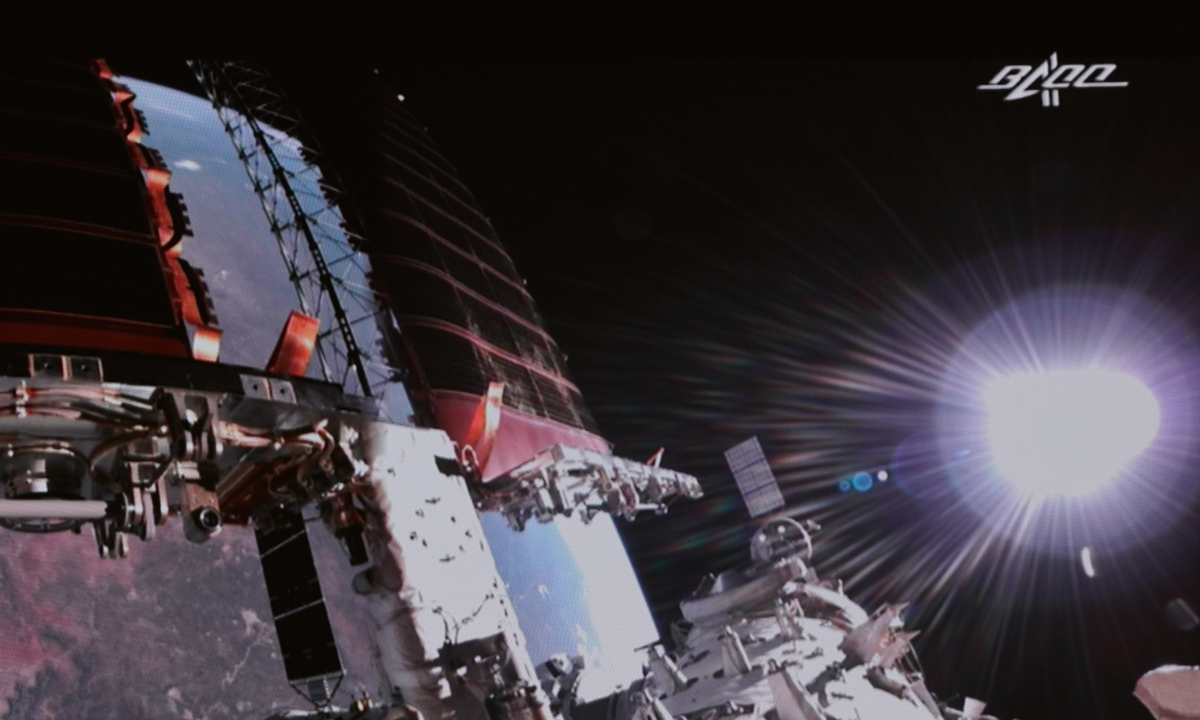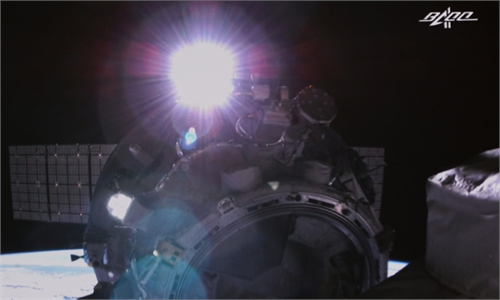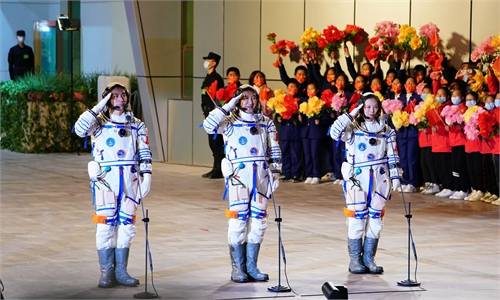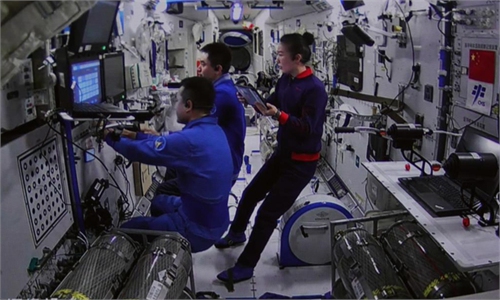
The Tianzhou-2 cargo spacecraft detaches from the Tianhe space station core module combination and moves to the mooring point 19 meters away from the Tianhe on March 27, 2022. Photo: Beijing Aerospace Flight Control Center
With the precise control and close monitoring of ground controllers, China's Tianzhou-2 cargo spacecraft made its re-entry to Earth's atmosphere at 6:40 pm on Thursday after detaching from the Tianhe space station core module earlier this week, the Global Times learned from the China Manned Space Agency (CMSA).According to the CMSA, the great majority of the Tianzhou-2 cargo spacecraft have burned up in the re-entry process, and a few remaining parts fell into designated areas in the South Pacific Ocean.
During its time in orbit, the Tianzhou-2 conducted four docking missions with the Tianhe spacecraft, and carried out a range of planned tasks including a fly-around of Tianhe, and verification of the robotic arms' operation, the CMSA revealed.
The Tianzhou-2 was launched from the Wenchang Space Launch Center in South China's Hainan Province on May 29, 2021, the first cargo supply craft launched at the key technology verification stage for the construction of China's space station.
There were 6.8 tons of supplies onboard the Tianzhou-2, including some 160 parcels of goods and two tons of propellants, the Global Times learned from the craft's developer China Academy of Space Technology (CAST) in May 2021.
Also on Thursday, China's manned space authorities said that the Shenzhou-13's three taikonauts - Zhai Zhigang, Wang Yaping and Ye Guangfu - who have stayed and worked in the Tianhe space station core module for more than 160 days, are expected to return to Earth by mid-April. They have renewed the record of the longest orbital mission in China's aerospace history.
During their stay, a number of breakthroughs have been made, including two extravehicular activities, two live space lectures, and some 20 scientific experiments. They have also verified multiple functions at the space station, including the feasibility and effectiveness of the robotic arm-assisted module transfer, accumulating valuable experience for subsequent work.
Besides, the Jiuquan Satellite Launch Center in Northwest China's Gansu Province held a rescue drill on Monday for the Shenzhou-13's return at its Dongfeng landing site, simulating the whole process from spotting the return capsule to various rescue and settlement arrangements.
Medical service teams for rescuing taikonauts will conduct exercises and receive training before their return, such as how to land by using a helicopter and how to keep returned taikonauts warm in April when the northern part of China is still pretty cold, a source close to the matter told the Global Times on condition of anonymity.




